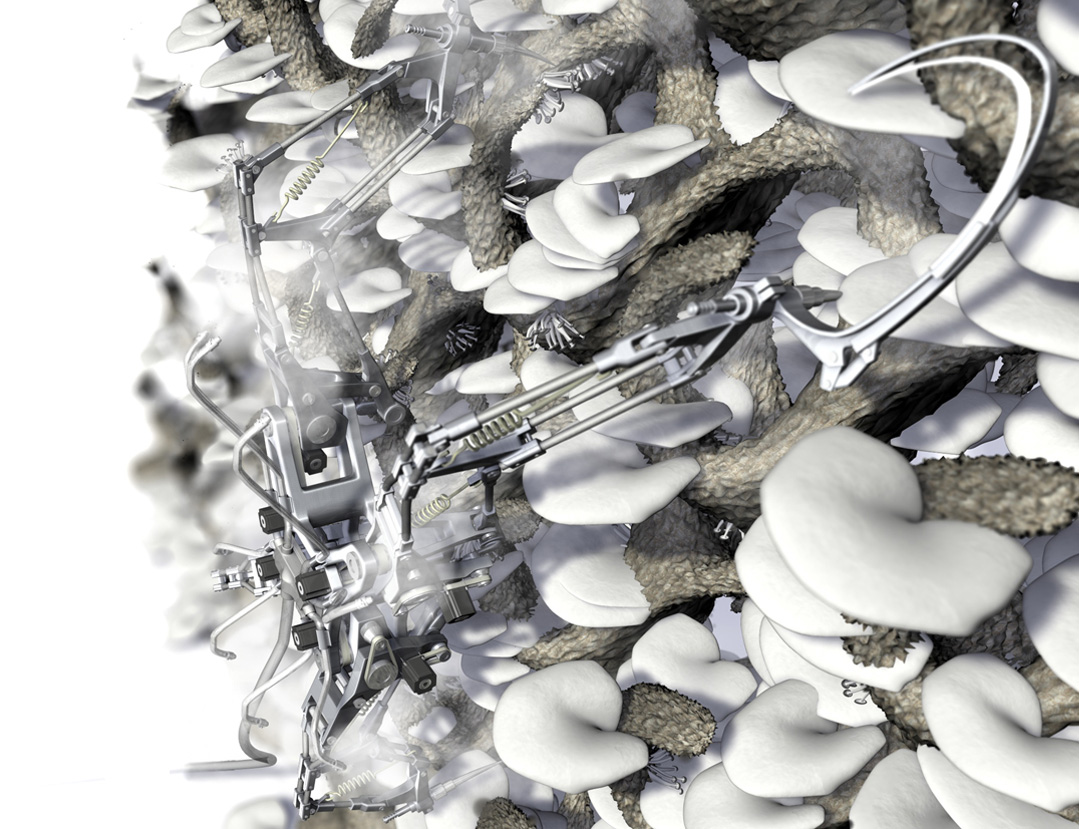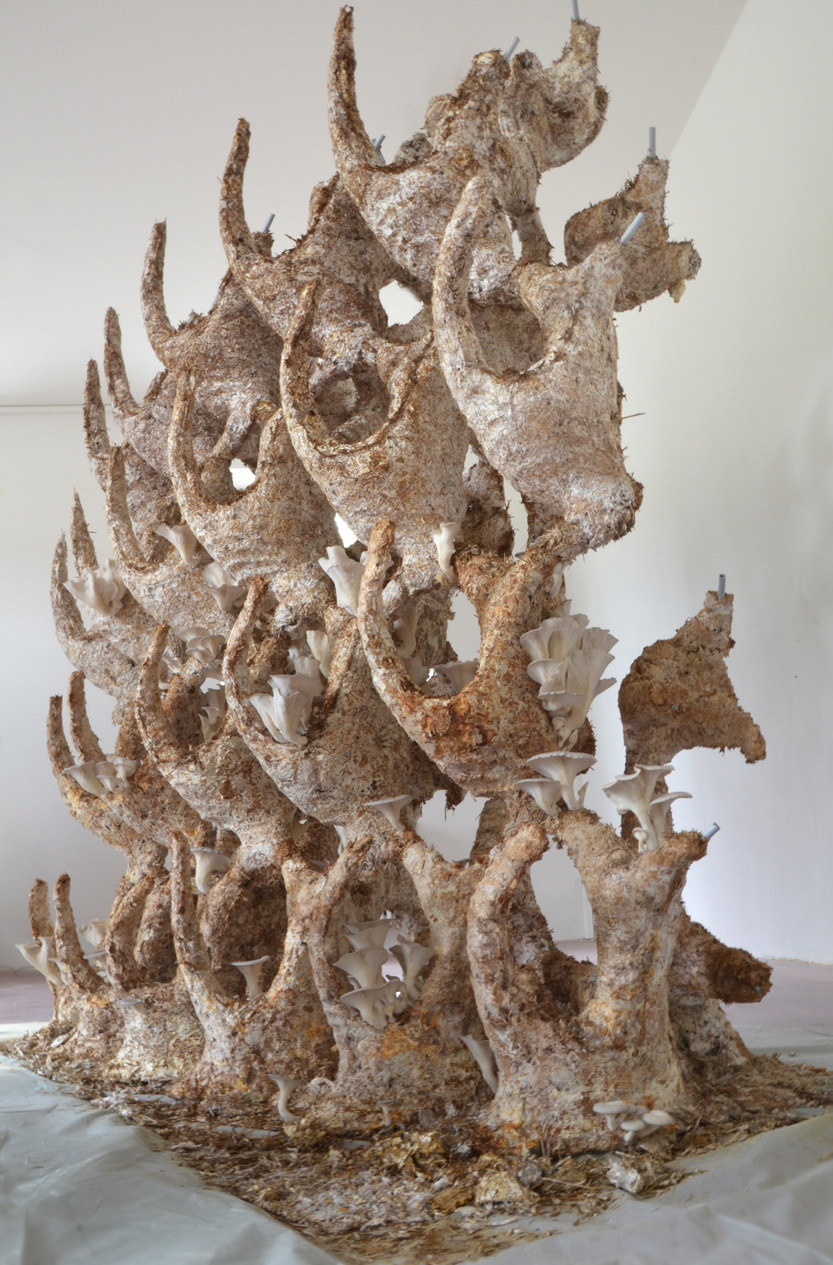Year: 2011
project at Akademie Solitude, Stuttgart;
3d-Print with the support of AlphaCam, Schorndorf
The Fungus Project – On robotic Gardeners And Vertical Shrubs
Extracting from the forests lower tiers, the scrubs accompanied by its wights ones erected to verticalness, cannot be kept off from entering architecture. The Fungus-Project uses perpetuated digestion as construction-mode. The digestion of straw by mushroom-mycelium acting as a vital, rhizomatically growing glue, creates a living composite-material forming a self-enshadowing reticulated structure, being watered and maintained by a water-propulsed gardener-robot, using hook-like branchings on the structure to climb on it cropping oyster-mushrooms.
The Fungus-Project works out the reciprocal effects of robotic machines maintaining and thereby informing architecture, and architecture informing machines.
Robotic Gardener
Eight waterspraying devices to maintain humudity, mounted on mainframe.Two underactivated rear arms, driven by three water-motors each. Two underactivated front arms, driven by three watermotors each. Climbing-hooks equiped with retractable blades to cut mushrooms. Two springs per arm to save energy while climbing. Four spikes with humidity sensors and capillar nutrition feed.
Fungus Structure
Each straw-mycelium-component contains a inner steel skeleton that carries the wet composite material (approx. 12 kg each). bushings are used to connect the components. As a branching tubing-system the skeleton could serve as a inner watering-system.
The component´s hook is slimer towards North where it exclusively serves as climbing device for the robotic gardener and becomes wider towards South to additionally protect the mushrooms from direct sun radiation.




